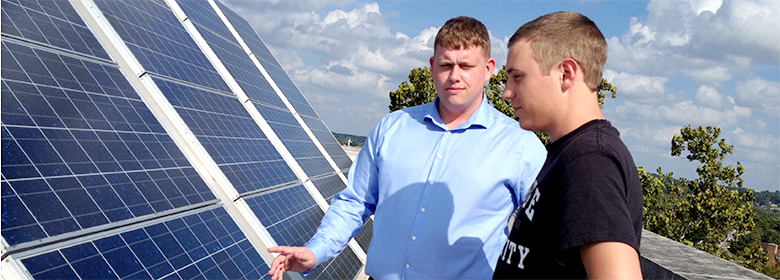
William Arnett’s solar energy research could have immediate impact on Purdue University and similar institutions.
His first publication, “Financial Analysis of University Investments in Solar Photovoltaics,” was presented at the 4th International High Performance Buildings Conference at Purdue, sponsored by Herrick Laboratories, in July 2016. Arnett was the lead author for the research paper. He received assistance from his advisor Bill Hutzel, professor of engineering technology, and fellow graduate student Praneet Arshi.
“Universities generally have large funds and large amounts of land. That makes a great opportunity for utility-scale photovoltaics. The larger the system, the cheaper you can get it,” Arnett said.
His research and resulting paper laid out three possible scenarios for a university considering the addition of photovoltaics. Purdue was used as a case study. The three options were compared across four factors to help inform the decision process. Arnett found that an array owned by a third-party, who would then sell electricity at a lower price, would likely be the most beneficial for all involved parties. The conclusion was based on this option’s favorable ratings for return on investment, risk mitigation, energy security and sustainability. The research also considered a university-owned system and a land-lease agreement with a local utility provider.
One focus of this project is outreach. Arnett has presented his findings to a variety of Purdue University groups, including the Office of Sustainability, the University Resources Policy Committee, and Physical Facilities. He has also interacted with student groups interested in the topic.
“People are very interested in renewable energy, but they don’t always understand how complicated it can be,” Arnett said. He hopes this work on the project, which was funded by the U.S. Department of Energy’s Sunspot Initiative, will help more people understand the decision-making process as well as the technical requirements for implementing renewable energy sources.
Arnett will graduate with an M.S. in Engineering Technology in May 2017. He is focusing on renewable energy generation and policy. He earned his bachelor’s degree in engineering technology, specifically electrical and electronic technologies, from Kent State University in Tuscawaras, Ohio. He plans to pursue a Ph.D. in the same field.
